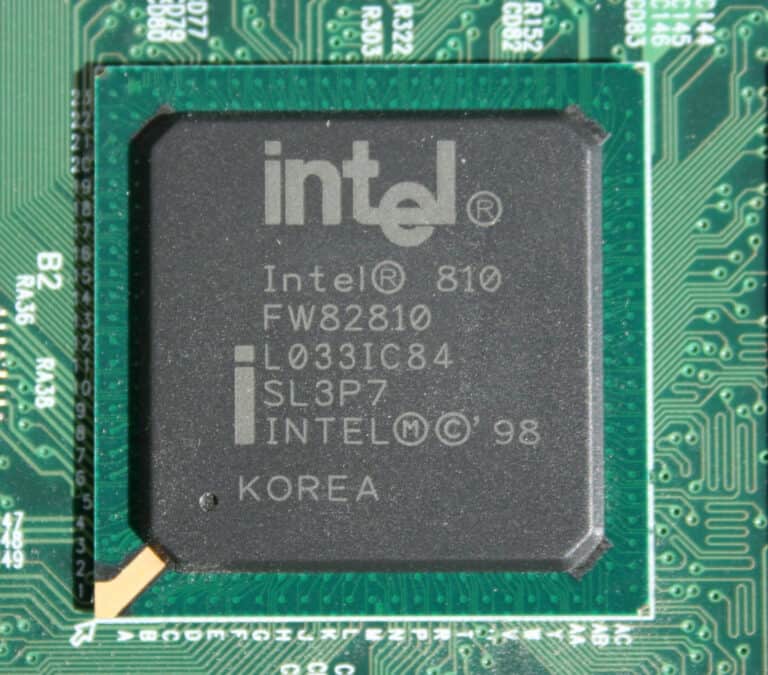Technology has significantly changed the way we live, but it can have a hefty environmental cost. Luckily, a growing market exists for eco-friendly tech gadgets that reduce your environmental impact. Here are some top choices for upgrading your tech while supporting a greener future:
Smartphones Built to Last
- Fairphone 4: The Fairphone 4 stands out with its modular design. This makes repairs and upgrades easy, extending the phone’s lifespan and minimizing e-waste. It also emphasizes ethical material sourcing.
- Shiftphones: Shiftphones offer repairable smartphones with an emphasis on longevity and fair practices.
Portable Power Solutions
- Anker Solar Chargers: These solar chargers harness sunlight to keep your devices juiced up on the go without relying on the power grid. They range from compact models to larger panels for extended trips.
- BioLite CampStove: This innovative stove burns biomaterials to generate electricity. Cook your meals and charge your gadgets simultaneously when camping or during emergencies.
Sustainable Home Tech
- Ecobee Smart Thermostats: Ecobee smart thermostats learn your habits and automatically adjust, saving energy when you’re out. They can integrate with solar systems for maximum efficiency.
- Philips Hue Smart Bulbs: LED smart bulbs like those from Philips Hue use significantly less energy than traditional bulbs. They can be programmed with schedules, controlled remotely, and create energy-efficient lighting scenes.
Buying Eco-Friendly Tech: What to Look For
| Feature | Description |
|---|---|
| Recycled Materials | Look for products made with recycled plastics, metals, or other sustainable materials. |
| Energy Efficiency | Choose devices with Energy Star certifications for power savings. |
| Repairability | Select gadgets that are easily repaired or upgraded, extending their lifespan. |
| Ethical Sourcing | Support brands that prioritize fair labor practices and environmentally conscious material sourcing. |
Remember: Even small choices can collectively create positive change for a healthier planet.
Eco-Friendly Tech Gadgets
| Gadget | Description | Eco-Friendly Features | Price |
|---|---|---|---|
| Solar-powered charger | Portable charger that harnesses the sun’s power to juice up your devices. | Reduces reliance on grid electricity, uses renewable energy. | $30-$200 |
| Smart thermostat | Learns your heating and cooling preferences and adjusts automatically to save energy. | Reduces energy consumption, saves money on utility bills. | $100-$300 |
| Energy-efficient light bulbs | LED bulbs use significantly less energy than traditional incandescent bulbs and last much longer. | Reduces energy consumption, saves money on utility bills. | $5-$20 |
| Reusable water bottle | Eliminate the need for plastic bottles by using a reusable one. | Reduces plastic waste, promotes sustainability. | $10-$50 |
| Smart plug | Control your electronics remotely and monitor energy usage to identify areas for improvement. | Reduces energy consumption, saves money on utility bills. | $20-$50 |
| Compostable phone case | Made from plant-based materials that biodegrade after use, unlike traditional plastic cases. | Reduces electronic waste, promotes sustainability. | $20-$40 |
| E-reader | Read ebooks on a dedicated device instead of paper books, saving trees and resources. | Reduces paper consumption, promotes sustainability. | $100-$200 |
| Smart sprinkler system | Adjusts watering based on weather conditions and soil moisture, preventing water waste. | Reduces water consumption, promotes sustainability. | $100-$300 |
| Recycled laptop bag | Made from recycled materials like plastic bottles or old tires, giving new life to waste. | Reduces waste, promotes sustainability. | $30-$100 |
| Wireless headphones | Eliminate the need for disposable batteries by using rechargeable headphones. | Reduces battery waste, promotes sustainability. | $50-$300 |
Please note: Prices are approximate and may vary depending on the brand, model, and retailer.
Overview of Eco-Friendly Technology
Eco-friendly technology is a broad term for products and systems designed with environmental preservation in mind. These innovations typically aim to reduce waste, cut down on energy consumption, and minimize harmful emissions. In the pursuit of green living, companies are developing gadgets that are both practical for day-to-day use and kind to the planet.
Sustainable technology is about finding a balance. It ensures that our tech habits contribute positively to the environment. For example, items like solar-powered chargers demonstrate how we can harness natural energy sources, thereby conserving power. Here’s a snapshot of what these technologies bring to the table:
- Reduced output of greenhouse gases: Devices running on renewable energy or having energy efficiency features support the fight against climate change.
- Minimization of waste: Products made from recycled materials, or those designed to be recyclable, help diminish landfill mass.
Companies like SodaStream demonstrate the positive impact eco-friendly technology can have. A single SodaStream bottle can replace thousands of single-use plastic versions. Similarly, House of Marley creates audio products using sustainable materials, leading to less environmental harm.
To embody energy conservation at home, one might opt for energy-efficient appliances that perform their functions effectively while using less electricity. In essence, each eco-friendly gadget represents a step towards a more sustainable future, helping individuals lead lifestyles that are kinder to Earth.
Sustainable Design Principles
As we make strides in eco-friendly innovation, the principles of sustainable design stand as the core pillars supporting a greener future. These principles ensure that gadgets not only perform efficiently but also contribute positively to environmental conservation.
Material Selection for Eco-Friendly Gadgets
Companies now focus on using sustainable materials for constructing gadgets. Recycled plastic is a popular choice, turning what would be waste into valuable components. Bamboo and plant-based materials are on the rise due to their biodegradability and low impact on the environment. Products like the SodaStream Terra Sparkling Water Maker highlight a commitment to reducing single-use plastics by encouraging consumers to utilize reusable bottles.
Energy-Efficient Design
Designing gadgets for energy efficiency is essential for sustainability. Smart home devices like thermostats and lighting systems are tailored to minimize power usage. They adapt to user habits and environmental conditions, cutting down on unnecessary energy consumption. Gadgets with in-built solar panels for recharging take this further by tapping into renewable energy sources.
Sustainable Production Processes
A crucial part of sustainable design is the production process itself. Companies are investing in methods that require less energy and produce fewer emissions. The adoption of recycled materials in tech manufacturing is a clear indicator of a shift towards more sustainable practices. By closing the loop on production waste, these companies set an example for responsible, eco-conscious production.
Renewable Energy and Power Consumption
As we seek more sustainable lifestyles, technology is keeping pace with innovations focused on reducing energy consumption and carbon footprints. Gadgets and appliances are now being crafted to tap into renewable energy, while also boasting features that manage power use more effectively.
Solar Power Innovations
Solar power is at the heart of renewable energy advancements. New solar-powered devices are entering the market, from chargers for our electronics to solar panels that can be installed on homes for energy self-sufficiency. These gadgets are not only reducing electricity bills but also slashing the carbon footprint associated with energy use.
Smart Energy Management
Smart thermostats and smart plugs lead the way in smart home technology, optimizing energy usage for heating, cooling, and electronics. With energy-saving features, they adjust power use based on patterns and preferences, potentially cutting down consumption significantly. Best of all, they can be monitored and controlled remotely, providing real-time data on energy use.
Battery Advances and Efficiency
The shift to renewable energy has pushed forward developments in battery technology. Modern batteries not only store more power but also have a longer life span, reducing waste and lowering replacement frequency. Energy-efficient appliances often include these advanced batteries, functioning on less power without compromising performance. Additionally, LED bulbs serve as a shining example of efficiency, offering the same brightness as traditional bulbs but using less energy.
Eco-Friendly Tech For Everyday Life
Embracing eco-friendly tech is no longer just a trend; it’s a smart choice for the health of our planet and for leading a sustainable lifestyle. This section explores gadgets and devices designed to reduce our carbon footprint without compromising convenience or performance.
Home and Office Gadgets
Smart Thermostats like Nest help regulate home temperature efficiently, saving energy by learning the homeowner’s schedule. Other gadgets, such as the Microsoft Ocean Plastic Mouse, incorporate recycled materials and prioritize sustainability from manufacturing to packaging.
- Recyclable Packaging: Look for products with packaging that can be 100% recycled to minimize waste.
- Smartphones and Laptops: Brands like Apple offer trade-in programs, encouraging recycling and reducing e-waste.
Travel and Portable Devices
Travel often means relying on portable devices to stay connected. Solar Chargers by companies like Anker provide a green power source, while Portable Power Banks made with eco-friendly batteries ensure a lower environmental impact.
- House of Marley: Offers portable audio devices with responsible designs and materials.
- Fairphone 5: A smartphone built with fair labor practices and designed for longevity, easy repair, and recycling.
Wearables and Health Technologies
Eco-conscious consumers can opt for Fitness Wearables that monitor health while made with environmentally friendly materials. Eco-Friendly Phone Cases can safeguard phones and reflect the user’s commitment to the environment.
- Recycled Materials for wearables: Durable and less harmful to the ecosystem.
- Bluetooth Connectivity: Reduces the need for wires, minimizing raw material use.
Recyclability and End-of-Life Management
When it comes to eco-friendly tech gadgets, it’s not just about energy efficiency while they’re in use; how they’re dealt with when no longer needed matters just as much.
E-Waste Reduction Strategies
Electronic waste, or e-waste, includes discarded electronic devices that are no longer wanted. To combat the rising tide of e-waste, manufacturers and consumers need to prioritize recycling. This means setting up and using programs that collect and reclaim valuable materials like aluminum, copper, and certain plastics from old gadgets. Many eco-friendly gadgets now promote recyclability, often being designed so they’re easier to disassemble and sort into materials that can be reused.
Repair and Upcycling
Repairability is a crucial aspect of reducing waste. Gadgets designed for easy repair extend their life and keep them out of landfills. Upcycling is another innovative way to handle old electronics. It involves repurposing parts or whole devices into new products. By encouraging repair through modular designs and supplying spare parts, some eco-friendly tech companies empower consumers to fix their devices, often with the help of online tutorials and community support.
Composting and Biodegradability
Not all tech products can be recycled, but there’s a growing interest in compostable and biodegradable materials. Products or parts made from bioplastics can break down naturally without leaving harmful residues. While composting tech gadgets is not mainstream yet, some components like biodegradable cases for phones or compostable packaging push the envelope further, helping to reduce the environmental impact when these products reach the end of their usable life.
Industry Standards and Certifications
When picking out eco-friendly tech gadgets, the real deal is finding those that have stamps of approval from trusted environmental ratings. They show which items truly walk the eco-talk.
Environmental Ratings and EPEAT
The Electronic Product Environmental Assessment Tool (EPEAT) is an easy-to-use resource for identifying high-performance, environmentally preferable devices. In the EU and UK, EPEAT helps consumers compare and select electronics based on their environmental impact. The ratings take into account factors like:
- Material use: Are the materials recyclable and responsibly sourced?
- Design: Is the product designed for a longer life-cycle?
- Energy consumption: Does the device use energy efficiently?
Many leading companies, like Apple and Samsung, aim for high EPEAT ratings to meet sustainability goals and lower their products’ carbon emissions.
Corporate Sustainability Reporting
Companies aren’t just making gadgets; they’re part of a bigger picture of sustainable living. Many organizations, particularly in the tech industry, release detailed sustainability reports. These documents outline their commitment to the environment and can include:
- Carbon footprint: How much emissions they’re responsible for.
- Efforts to reduce waste: Their strategies for minimizing environmental impact.
Such reports offer transparency, allowing consumers to hold companies accountable and support those that prioritize eco-friendliness.
Consumer Choices and Impact
When it comes to electronics, our choices have real effects on the environment. Selecting eco-friendly gadgets, supporting responsible companies, and reducing our overall consumption can lead to positive changes.
Selecting Eco-Friendly Gadgets
It’s important to choose gadgets that are designed with sustainability in mind. Look for eco-friendly materials like bamboo or recycled plastics. For example, some earbuds are now available with bamboo cases. Plus, picking products designed for easy assembly and repairability can extend their lifespan. Websites like iFixit guide users through repairing their own devices, contributing to sustainability.
- Sustainable Materials: Check if the gadget is made with sustainable materials.
- Design: Aim for durable design that can be easily fixed.
- Recyclability: Find gadgets that can be recycled after use.
- Research: Always do your research before purchasing.
Supporting Ethical Brands
Choosing brands that are committed to reduction in carbon footprint and ethical practices is a form of voting with your wallet. Support companies that provide transparency about their sourcing and labor conditions. A brand’s dedication to the environment can often be seen in their use of sustainable materials and responsible manufacturing processes.
- Transparency: Look for brands that share information about their manufacturing process.
- Ethical Practices: Choose companies that prioritize the well-being of their workers and the planet.
Reducing Consumption and Waste
Cutting down on unnecessary purchases is the most direct way to reduce our environmental impact. Consider buying used tech instead of new, and avoid products that rely on single-use plastic bottles. Opting for multi-purpose eco-friendly kitchen gadgets helps minimize the need for multiple devices. By reducing waste, we help lessen the demand for new products and the strain on the ecosystem.
- Used Tech: Buying used or refurbished tech can be just as good as buying new.
- Avoid Single-use: Swap out single-use items for durable, reusable options.
- Eco-friendly Electronics: Choose electronics that have a lesser impact on the environment.
Frequently Asked Questions
Exploring eco-friendly tech gadgets raises many questions. This section answers some of the most common inquiries to help guide your decisions in choosing sustainable technology.
What are the top-rated eco-friendly gadgets currently available?
Philips Hue Smart Light Bulbs are highly rated for their energy efficiency, using up to 75% less energy and lasting much longer than traditional incandescent bulbs. Moreover, eco-friendly diffusers that also serve as humidifiers and air purifiers are popular for improving air quality while offering energy savings.
How do eco-friendly devices benefit the environment compared to conventional ones?
Eco-friendly devices often use less energy, which reduces greenhouse gas emissions from power plants. They may also be made from sustainable materials and have a longer lifespan, minimizing waste and the consumption of resources.
What factors should be considered when purchasing eco-friendly technology for the home?
Look for products with energy-saving features like LED lighting or Energy Star ratings. Durability and recyclability should also be on your checklist, as well as the company’s sustainability practices and the gadget’s overall impact on your carbon footprint.
Can you provide examples of eco-friendly technologies that have a significant positive impact?
LED lighting solutions significantly reduce energy usage. Smart thermostats adjust heating and cooling for efficiency. Solar panel chargers and portable turbines offer renewable ways to power devices, contributing to a reduced reliance on fossil fuels.
What are the latest innovations in eco-friendly electronic products?
Recent innovations include advancements in battery technology, which allow gadgets to run longer on less power and charge more quickly. Biodegradable electronics and energy harvesting devices, like those converting kinetic energy into electrical power, are also on the rise.
How can consumers verify the eco-friendliness of technology products before purchasing?
Consumers can check for certifications such as Energy Star, Fair Trade, or FSC labels. Online databases and apps also provide information on a company’s environmental impact, and user reviews can give insight into real-world energy savings and product longevity.







